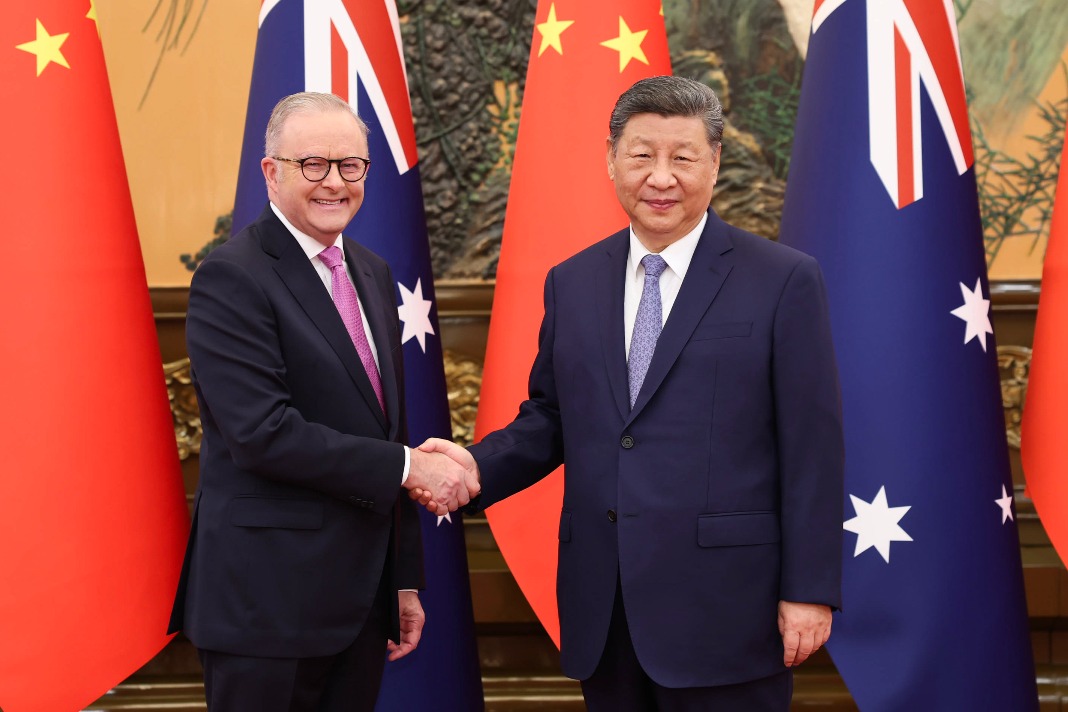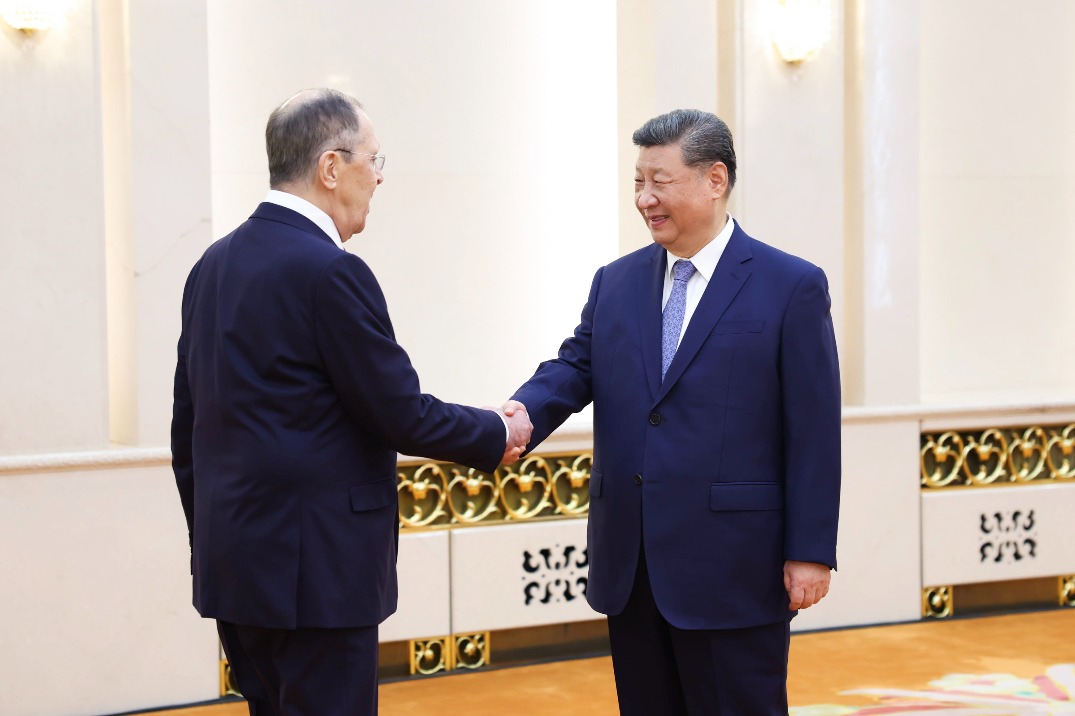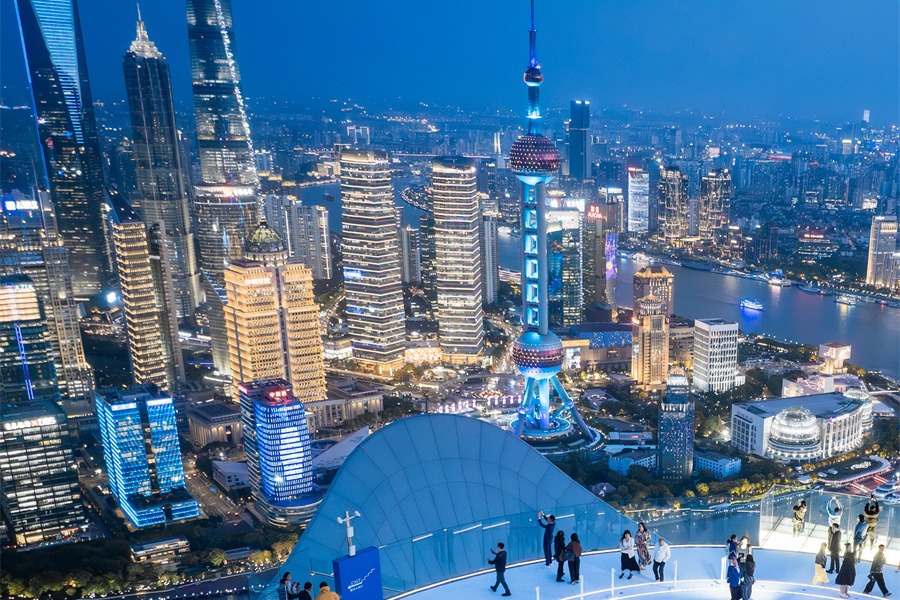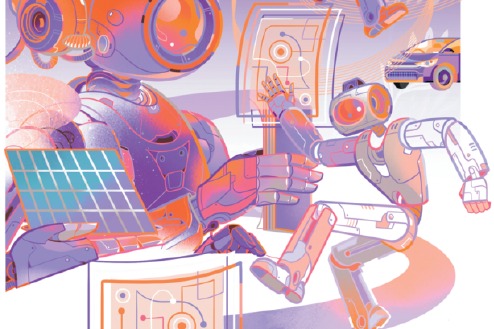Green pioneers


Cities should spearhead the country's quest for carbon neutrality
Although more and more Chinese businesses, especially the ones that consume relatively less energy, have unveiled their own carbon neutrality plans, it is of greater practical and policy significance to draw concrete road maps for achieving net-zero emissions if we take cities as the main body to herald the journey toward neutrality.
More than 70 percent of China's carbon emissions come from cities, according to the Natural Resources Defense Council, an international nonprofit environment organization. As China advances its urbanization process, the share is likely to continuously rise. Therefore, it will be half the work with double the results if we reduce and offset carbon emissions from social and economic activities in cities via policies and practices of all sorts to achieve net-zero emissions.
Meanwhile, city dwellers have greater awareness of the concept of low-carbon development and stronger ability to pay for a low-carbon lifestyle. From the payment capacity perspective, the per capita disposable income of urban residents was 43,834 yuan ($6,785.5) in 2020 and that of rural residents was 17,131 yuan, making the former more likely to pay more for a low-carbon lifestyle. Further, the more advanced infrastructure in cities and greater development of the digital economy make it possible for cities to more precisely record the costs and effects of low-carbon policies. In a nutshell, it is quite feasible and totally necessary to make cities the pioneers in China's carbon neutrality quest.
There are two major ways for cities to achieve carbon neutrality. The first is energy conservation and emissions reductions through such means as overall transition planning, industrial and energy structural adjustment and enhancement of energy efficiency and the promotion of low-carbon consumer behaviors; and the second is carbon offsetting through such means as forest carbon sinks and carbon capture, utilization and storage technologies. Studies show that forest carbon sinks can only offset 1 to 2 percent of carbon emissions and their significance mainly lies in enhancing biodiversity. Development of carbon sequestration, on the other hand, depends on the varying levels of maturity and security of technologies and whether the technological cost could be lowered year by year. Therefore, green transformation of the energy system is the key to achieving carbon neutrality.
Low-carbon and clean electrification is already an ongoing energy transformation campaign globally, the ever-increasing share of clean energy in the energy mix, enhancement of electrification level and continuous optimization of energy efficiency have become major means of rising to the climate challenge. The low-carbon energy systems of cities have to realize energy structural transformation via low-carbon and clean electrification, so as to reduce carbon emissions to the greatest extent.
To realize carbon neutrality, cities should start by building low-carbon energy systems on the production, consumption, and infrastructure sides. Such systems should include smart energy infrastructure, low-carbon and clean electrification, low-carbon transport and low-carbon city administration. From the perspective of its full life cycle, the construction industry, from the process of building construction to building operations, consumes a hefty amount of energy and electricity, and is directly and indirectly responsible for over 50 percent of carbon emissions in cities. Therefore, the construction industry is undoubtedly a priority area for decarbonization. Future buildings in the city should better apply energy conservation and emissions reduction technologies to become more energy-efficient.
The transport system is another major source of carbon emissions in cities, making low-carbon transport an inevitable trend in the foreseeable future. The low-carbon transport designs for cities should include the replacement of gasoline vehicles with new energy vehicles, the increasing of the use of public transport, promoting non-vehicle urban mobility choices such as walking and bicycles, and sound road planning, so as to realize low-carbon transport systems and emissions reductions.
Furthermore, the low-carbon energy systems in cities need to be backed up by more advanced means of urban administration. Low-carbon city administration needs to be incorporated in the overall design and planning of a city's development, which encourages the public to live low-carbon lifestyles, comprehensively boosts the development of low-carbon industries, greatly develops new energy industries, and encourages technological innovations, so as to promote the implementation of low-carbon policies on all fronts.
The generalized energy conservation principle should be upheld when building low-carbon energy systems in cities, including increasing energy efficiency, developing the circular economy, and promoting industrial restructuring, a process for which digitalization is a major driving force. The digitalization of the energy system will further propel the energy revolution. Empowered by digitalization, the energy system will become more flexible and capable of dealing with changes.
Digital tools could also help analyze the energy consumption conditions of buildings, assist the construction of more intelligent infrastructure, and promote the optimal utilization of renewable energy and decarbonization of industrial clusters. The integration of digitalization into smart power grids and the energy internet will enable more efficient utilization of energy based on information. Digitalization could also help the power and energy systems optimize operations. In general, digitalization will become a major means of improving resource efficiency and energy efficiency and reduce carbon intensity, especially in cities.
In China, the more developed cities such as Shanghai, Beijing and Xiamen should come forward and take the lead in the journey toward a carbon-neutral future by putting forward their own carbon neutrality goals and schedules. With carbon centrality as the goal, they should, as soon as possible, incorporate carbon constraints into the city's overall development, make scientific top-level design, formulate concrete action plans based on local context, greatly develop the low-carbon economy, facilitate energy structural transformation, build a low-carbon energy system, and support green and low-carbon industries. These measures will not only facilitate their own carbon neutrality progress, but also provide reference for other cities' carbon neutrality strategies.
The author is dean of the China Institute for Energy Policy Studies at Xiamen University. The author contributed this article to China Watch, a think tank powered by China Daily. The views do not necessarily reflect those of China Daily.

































